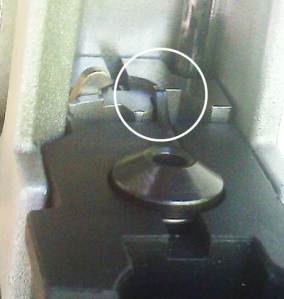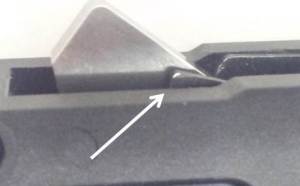Recently a friend emailed me about an awful weekend he had at the range, due to nearly constant malfunctions. Here, in his words:
…had several light primer strikes, failure to fire, stovepipes. Started after the first Red Coat target on Day 1… I cleaned the rifle at lunch: Breech, barrel, action, and bolt face. Continued to have problems. During the evening, I removed the bolt, cleaned as much gunk as I could find, esp. in the area of the firing pin and bolt face recess, and reassembled. Lubricated with Froglube
Day 2: Switched ammo. Red Coat target, and I get two stovepipes, then a double feed. Upon clearing the double feed, I ended up with a slamfire. Having had my fill, I quickly swapped out bolts from my primary rifle with my secondary, and the number of issues tapered down temporarily. By the end of day 2, I ended up with an increasing amount of FTFs/Light Strikes, and occasionally, the extractor would remove the round from the chamber, but not eject the round.
There’s a whole lot of ugliness in that story, and a clue for Sherlock Holmes. Here’s what we know so far:
- Often failures to eject are due to something impeding the bolt’s movement. But the rifle was clean before starting, and he cleaned it after fewer than 100 shots at lunch. Dirt was not the problem. Scope mount screws did not stick out into the bolt area. The extractor was not binding in the barrel. He was using reliable BX-1 10-round magazines.
- Poor-fitting ammo could be a problem in “match chambers”, but not in this case. My friend’s barrel is box-stock, with the OEM “eats everything” chamber.The “double feed” [sic] was from manually cycling the bolt after a failure to fire, but the unfired round did not extract from the chamber. The new round jammed in the receiver as it had nowhere to go. And then…
- My friend locked the bolt open, dropped the magazine and cleared the jammed round. Then he released the bolt – into the chambered round, which slam-fired when either the bolt face or the extractor hit it hard. Fortunately, he knows the safety rules and was aimed downrange when it happened. No harm done.
- Got the clue yet?
The clue turned into a shrieking alarm when I read this in his next email:
Picture this: I locked the bolt back, checked the chamber, and a round was seated on the bolt face, held in place by the extractor.
Got it now? The ejector was not seated properly in its slot in the trigger group housing. The misplaced ejector was wreaking havoc on the movement of the bolt and of the hammer. When the ejector is in place, there is no way you can lock the bolt back without having the ejector pop the case out from the bolt, as shown in this photo from The 10/22 Companion:
See how deeply it protrudes into the pocket? So if a round is still in the pocket with the bolt locked back, the ejector is not where it belongs. Here is where it belongs:
But where could it have been? I tried to replicate his problem. The slot is too deep and narrow to allow the ejector to lie askew across it. Merely rotating the ejector back onto the left-side hammer bushing leaves it so high that while you could install the trigger group, you can’t pull the bolt back more than about a half inch before it is blocked by the ejector. Same on the right side. But to the right of the hammer bushing there is enough room for the ejector to fall back to a very low level – low enough to allow the bolt to pass over it, as shown below:
Bottom line: This will never happen to you if you verify that the ejector stays properly seated in its slot while installing the trigger group into the receiver.





Pingback: Interim (Lazy Man’s) Action Bedding | The 10/22 Companion